- Home
- Andrew C Broderick
Zara's Flight: Book One of the Kato's War series
Zara's Flight: Book One of the Kato's War series Read online
Zara’s Flight
Copyright 2015,
Andrew Broderick.
Dedicated to Kiara Broderick:
the heart of Zara lives in you.
Part I
Chapter 1
The giant, colorful screens all over Times Square that advertised everything from Broadway shows to cell phones changed simultaneously to show what appeared to be a newscast. The red logo at the bottom read: “TAON FOUNDATION.” Forty-seven-year old Kato Sasake-Robbins’ face appeared. The beautiful eighteen-year-old Zara Sasake-Robbins was among the crowd, looking up, with her two best friends Anna-Nicole and Mikayla. “Dad?” Zara said. They stood rooted to the spot. All activity around them ceased, as the crowd stared at the screens. Time seemed to stand still.
Kato’s voice boomed out across the thoroughfare: “Fellow citizens of Earth, I stand before you today as humanity’s first emissary to the stars. My success has enabled me to amass the resources to build the kind of spaceship that could once only be built by the whole world. I will be her only crew member and I will fly as fast as she will allow, on a one-way trip out of the Solar System.” Zara’s eyes widened and she clasped a gloved hand to her mouth.
“Of course, even the nearest star is not reachable within a hundred human lifetimes. Therefore, I will live all the days appointed for me aboard the ship. What remains of me will then be cryo-preserved for as long as the ship’s power source will last. She will carry recordings of all the knowledge, entertainment, and artworks ever produced by humanity, and the DNA samples of a million volunteers. She will also carry a radio beacon that will broadcast a signal in all directions for over a thousand years, to whatever ears may be listening. This mission will also pass very close to the planet Saturn, in an attempt to further our knowledge of that world.
“How much richer could our descendants be if they established links of interstellar friendship and commerce with whatever unknown life forms may inhabit other solar systems? I present to you, the spaceship Eternity.”
The screen switched from Kato’s face to display a rendering of a long, spindly spacecraft, rotating slowly. It had a glowing hexagonal engine block at one end, then a long, thin white metal truss structure, and finally two large white interconnected spheres at the other end.
Zara’s mouth opened wide, as if to say something, but no words came out. Hot, intense tears welled up in her eyes. Times Square began to tilt and the snow came up towards her. Hands grabbed and supported her, giving her a soft landing. Snow crunched. Cold on her right cheek. “Oh, my God! He’s actually going to do it!” Zara said weakly.
“Oh, Zara!” came a voice from far away. A face. Someone else’s tears melting little holes in the snow. A gentle sting on her left cheek from a caring hand, attempting to keep her from fainting entirely.
Chapter 2
A day had passed since Zara’s world collapsed. The long-haired, Japanese-American girl sat in the luxurious New York apartment she shared with friends Anna-Nicole and Mikayla. The other two buzzed discreetly around, taking care of their friend, but trying not to intrude on her grief. Zara opened her journal and began to write.
I am the daughter of the richest man in the world. I live a life of privilege, and yet – I lack the greatest treasure of all. A mom. And now, a dad. At least, one that cares enough not to leave and never come back. Nanny Maria tried, bless her, to fill Mom's place. But she wasn't the same. Dad was too busy working to be there for me. And now I'm going to lose him forever—to a one-way space mission.
RICHES ARE A CURSE, NOT A BLESSING.
I now know this to be true.
The pen left the page, and Zara chewed on the end of it. She sighed deeply, and then began to write again.
I could hit Dad if he were in front of me now. Especially for not even telling me in person. I had to find out through a damn billboard! But, I'd still go to the ends of the earth for him. Family is still everything. Such as it is. Anna-Nicole and Mikayla are a surrogate family, and wonderful blessings in my life, but Kato's still my dad.
But, how can I possibly come to terms with what he’s doing? I doubt I ever will.
When the South Korean Seung Yi was sixteen, troubling signs of an unbalanced psyche began to manifest themselves in his life. He had dropped all his previous hobbies, which included archery and computers, and begun to only read books about torture and genocide. He began to build a library of them—print copies, even, which were already very rare by then. He dressed only in black. In an effort to ‘snap him out’ of whatever was going on, his parents had taken him on vacation to space. Being heirs to the Samsung fortune afforded them many privileges. On board the Bigelow Orbital Complex, the main space tourist destination, Seung Yi had met Kato for the first time. Kato was also sixteen. He had traveled there without his parents. The pair disliked each other instantly. Kato’s boldness in traveling to space by himself, coupled with his astronaut heritage, filled Seung with obsession and envy. Once back on Earth, Seung had compiled a digital dossier on Kato’s entire life, which was easy to do through social network posts. Then, he had recreated parts of Kato’s life in a virtual reality simulator, including his playing on his high school’s baseball team. He tried on Kato’s life for size, and found the fit to be very good. In Seung’s eyes, Kato was everything he was not: good looking, confident, popular—and American.
From then on, Seung tried to mold his life to be like Kato’s in every way he could, driven by his own sense of inadequacy. A true stalker mentality kicked in. Seung found out that Kato was very, very good at robotics. So, he studied robotics at university. When Seung first read of Kato’s invention of user-friendly nanorobotics, he began post-doctoral research in this field. Then, when the time was right, Seung Yi made contact with Kato again. Kato’s then-fledgling company, TAON, was struggling with a seemingly intractable technical roadblock in order to mass-produce the nano-sized parts that he needed to bring his invention to market. Seung happened to have the answer, through his research at the University of Seoul. He persuaded Kato to hire him. Kato did, though it was from pure necessity, as he disliked Seung intensely. Even decades after their first meeting as teenagers, Seung’s malevolence had left a bad taste in Kato’s mouth.
Once Seung had mastered TAON’s technology, he stole it, moved to China, and started MX9 Robotics. MX9 soon flooded the market with cheap copies of TAON’s products. Kato, incandescent at this, had tried through every legally available avenue to stop Seung Yi. He was only successful in North America, as China’s judicial system was in Seung’s pocket. (The Chinese government was in no mood to cooperate, either: the war with America over Taiwan had left them humiliated and embittered.)
As Kato’s star had risen, so had Seung Yi’s. MX9 was technologically inferior, but that didn’t matter: they simply reverse engineered, copied, and sold everything TAON came out with. As the technology progressed from nanorobots, to flexible stalks that could emulate humans, to slithering, intelligent forms that could do practically anything (known as shape-shifters), both men had become rich beyond the wildest imaginings of past tycoons.
Chapter 3
The headline on the cover of Fortune Magazine read: ON TOP OF THE WORLD, AND NOW LEAVING IT. It was superimposed on a picture of Kato, wearing a sharp business suit, a crisp white shirt, tie, and polished black wingtip shoes. He posed in a dark oak-paneled office with his arms folded and his right foot upon a large beach ball-size globe of the Earth. Kato’s gray eyes bored into the camera’s lens. His look was one of steely resolve—not unpleasant, but not about to take any crap, either. The article inside read:
Kato Sasake-Robbins. The world’s grea
test living inventor and business legend. We all know his story: a math and computer prodigy in high school, he founded TAON (The Age Of Nanorobotics) at age twenty-five. His shape-shifting robots have fundamentally transformed our society: they till and reap our fields, build our houses, cook our food, fish the depths of our oceans, and take care of our elderly. The old economic system of working for money and being paid is rapidly being eroded as these machines continue their drastic fall in price. Our countryside is being repopulated, as people can live off the land once again, without backbreaking labor.
TAON (pronounced tay-on), is the largest company in the world, with a market capitalization of $1.3 trillion. Sasake-Robbins himself, with a 40 percent stake, is the world’s richest man with a net worth of just over half a trillion dollars.
Footnote:
The true invention that led to shape-shifting robots, standardized nanomodules that can be replicated by the user and connected like Lego bricks to build “smart matter”, is actually credited both to the aforementioned and to South Korean Seung Yi. Yi’s company, China-based MX9 Robotics, continues to produce flexiform robots, the predecessors to the shape-shifters, and seems to be permanently stuck in a race to catch up to TAON. Yi’s net worth is believed to be circa $400 billion.
The Japanese-American Kato sat at the long conference table at the headquarters of the TAON Foundation (the nonprofit arm of his company, which would launch him into the heavens). He had chiseled, angular features, and short, black hair that was showing a few gray flecks. His crisp white shirt was unbuttoned at the collar.
The space resembled a Pentagon war room: the walls sloped inward slightly and were all screens. There was no natural light. Kato’s technical, inventive mind was working overtime. At the table sat twenty-five people. Ex-astronaut and old friend Christopher Fay was on hand, as were leading experts in space propulsion, life support, shipboard systems, avionics, and navigation. The room was semi-darkened and there, projected in 3D above the table, glowed a three-meter-long rendering of the current design of the spaceship Eternity. Screens on the walls glowed with the current designs of various subsystems offering cutaway renderings, charts, and data.
“Irina, what do you have on the life support front?” Kato said.
A younger, blonde, Ukrainian lady put down her tablet, brushed her hair out of her face, and addressed the room. “Well, Kato, our task is to keep you alive for around seventy years—the current average human lifespan of a hundred and twenty years, minus your current age of forty-seven—well, fifty-two or so by the time we launch. With no recycling, you would need perhaps fifty-five tons of water, fifty tons of food, and twenty-five tons of liquid oxygen. All of this would be doable, but for the fact of cryogenic boil-off: the liquid oxygen gradually turns back to gas, because refrigeration technology isn’t perfect. To allow for this, we would need more like two hundred and fifty tons of LOX!” The others looked concerned and started murmuring.
“This, of course, is not doable,” she continued. “I therefore propose a novel solution: researchers at the University of Kent in England have come up with a new, ultra-efficient way of recycling oxygen. Plants have been studied as natural recyclers for use in space for a long time, but it takes a prohibitive amount of them to keep astronauts alive. Their new approach uses layers of moss, covered with an active layer of nanorobots, used to feed in CO2 molecules and extract O2 much faster than normal. Another system of nanorobots pulls in nutrients to the moss. Note that these are active systems, not just passive nanomaterials—developed, of course, on TAON’s equipment.
“By doing this,” she continued, “we can recycle eighty percent of the oxygen—with a four-ton weight penalty for the system and its nutrients, thus bringing the total weight for oxygen provision back down to fifty-four tons. The mission is still doable.” This produced animated reactions in the room, and everyone started talking at once.
“Outstanding!” Kato said. The others quieted down. “Contact those researchers and work with them to accelerate trials of the system and scale it up to production use.”
Others reported on the latest design work on the spacecraft’s structure, electronics, and avionics, with the meeting lasting the rest of the day. The approximate number of cargo launches was now known. Orders were promptly placed with space transportation companies to launch the pieces to the ISS2—the scientific component of the Near-Earth Complex—where construction would take place.
The portly, bearded James Harrell, Kato’s best friend and TAON’s second ever employee, had slipped out with Kato to have lunch at an Italian restaurant near TAON’s headquarters in Durham, North Carolina. They sat in a darkened booth at the back, hoping they wouldn’t be recognized, nursing drinks while waiting for their lunch to arrive.
“Hitting the hard stuff at lunchtime, huh?” Kato teased as James swirled Scotch whisky idly around in his glass.
“Yeah,” James replied, with a touch of melancholy in his voice. He closed his eyes for a moment, set his drink down, and took a deep breath. “So, you’ve made it to the top of the world, changed it, and now you’re leaving it, huh?”
Kato smiled and became very animated. “Yeah. It came to me when I was out in Alaska, trying to find myself, as people do out there. I spent many nights looking up at the stars—they’re crystal clear out there. Then it hit me: offer myself to them! Follow in my parents’ footsteps, as space explorers, but become the furthest and fastest human being ever. My name will be recorded forever in history, like Neil Armstrong, Kan Tung-chi, and Alessia Abbado, who were first to set foot on another celestial body. I mean, it’s very unlikely I’ll meet aliens, but if humans ever do meet them, I’ll probably be the first one.”
Kato paused for a moment, collecting his thoughts. “Using the same engine technology as the International Mars Explorer, but going flat out and not slowing down for anything, I’ll reach a little under two hundred kilometers per second! Of course, my fuel will all be used up, so there’s no hope of turning around—even if I wanted to. What I didn’t mention before about the Saturn encounter is that I’m going to dive through the rings!”
James was aghast. “What?”
Kato grinned, salivating at the thought. “Yeah. I’m going to aim for one of the gaps and head straight through them, passing as close to the planet as I can.”
James grabbed the edge of the table to steady himself, unsure that he was really hearing this. “Holy cow, dude! Aren’t they made of small rocks and debris? Even a tiny strike at that speed and you’ll be vaporized! How do you know you won’t hit a stray pebble?”
“I don’t! I’m going to chance it!” Kato was now speaking loudly enough to draw attention from other patrons.
“Good Lord! Talk about living on the edge!”
James sighed and his expression changed. “I’ll be honest, buddy—I’m really gonna miss you. A lot of people around here will.”
Kato nodded. “I’ll miss all of you, too. What a ride it’s been! And it’s still not over. Nobody can see where technology will take us after this. I’ll have to start looking for a new CEO at some point, though.”
James nodded, and then changed the subject. “So, how’s that daughter of yours?”
Kato became more businesslike, as though shooting the breeze with an associate who wasn’t also a close friend. “Doing well, as far as I know. She’s really enjoying New York and doing well in her studies. She wants to be a painter.”
“How’s she taking your leaving?” James asked, knocking back the rest of his whisky in one gulp.
“Badly.”
James nodded sympathetically. “Probably brings back memories of losing her mom.”
Kato nodded. “Yeah, probably.”
“And this doesn’t bother you?”
Kato pursed his lips. “It does. I’ll be honest: I’m trying not to think about it.”
The alcohol was loosening James’s tongue. His jaw clenched slightly. “So, trying not to think about her, in other words?”
Kato sighed and looked away. He didn’t have a response.
Chapter 4
The subway car had a distinct odor—a mixture of dirt, electricity, and last night’s takeout. Someone may have been to the bathroom in it at some point. Cleaning efforts had not been wholly effective. It rattled, half-full, beneath the Hudson River, carrying an eclectic mix: some young African-Americans and an old, well-dressed Chinese man wearing a fedora, among others. His coat lapels were pulled up around his neck. Across from him sat a short, dumpy Mexican lady, and others of unknown origin. A young boy rapped along with the track he was listening to, with no regard to who might be listening. Zara, Mikayla, and Anna-Nicole were far from their comfort zone: the prosperous heart of Manhattan. Mikayla (also African-American) shot the others a glance that said, What on earth have we gotten ourselves into?
“It’s legit,” Anna-Nicole reassured her. Their voices were too low to be heard above the noise of the train, which was amplified in the tunnel. The seats were in opposing rows, down the sides of the car. An older black man, sitting opposite, kept looking up quizzically from his newspaper at Zara. She still had her mouth covered with a scarf despite the spring-like weather, to try to avoid being recognized. They had deliberately dressed in sneakers, jeans, and hoodies for the occasion: rich, young socialites had no place where they were going.
“Here it is, guys. We have to change to the ‘R’ train,” Anna-Nicole said as they pulled into DeKalb Avenue station. They alighted onto the grimy platform and headed up an escalator. Janitors, bartenders, teachers, and artists passed them, on their way to or from their jobs downtown. On the platform above they waited anxiously, glad of the presence of security cameras.
“Okay, here we go—Bay Ridge/Ninety-fifth,” Anna-Nicole said. They hopped aboard another train—this one was cleaner, and more sparsely populated. They sat down, relieved that the environs were less gritty.

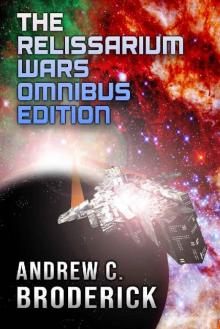 The Relissarium Wars Omnibus
The Relissarium Wars Omnibus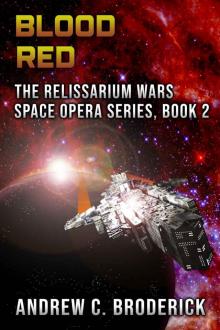 Blood Red: The Relissarium Wars Space Opera Series, Book 2
Blood Red: The Relissarium Wars Space Opera Series, Book 2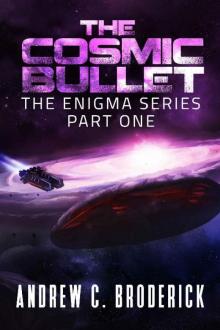 The Cosmic Bullet: The Enigma Series, Part One
The Cosmic Bullet: The Enigma Series, Part One Zara's Flight: Book One of the Kato's War series
Zara's Flight: Book One of the Kato's War series Annihilation: The Relissarium Wars Space Opera Series, Book 1
Annihilation: The Relissarium Wars Space Opera Series, Book 1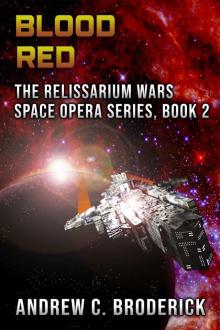 Blood Red
Blood Red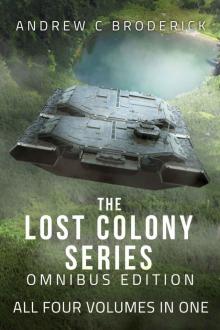 The Lost Colony Series: Omnibus Edition: All Four Volumes in One
The Lost Colony Series: Omnibus Edition: All Four Volumes in One Kato's War: Book Two of the Kato's War series
Kato's War: Book Two of the Kato's War series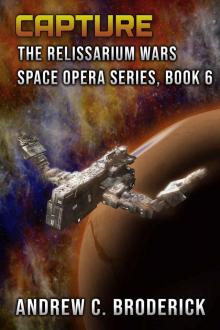 Capture: The Relissarium Wars Space Opera Series, Book 6
Capture: The Relissarium Wars Space Opera Series, Book 6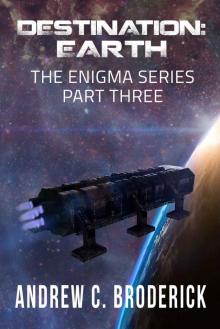 Destination: Earth: The Enigma Series, Part Three
Destination: Earth: The Enigma Series, Part Three Kato's War
Kato's War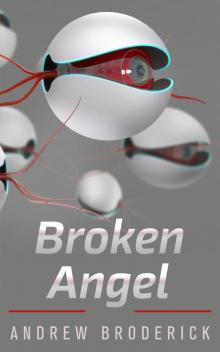 Broken Angel
Broken Angel Firestorm: The Relissarium Wars Space Opera Series, Book 4
Firestorm: The Relissarium Wars Space Opera Series, Book 4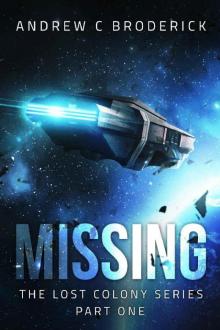 Missing: The Lost Colony Series, Part One
Missing: The Lost Colony Series, Part One